How and when is the New Year in India celebrated?
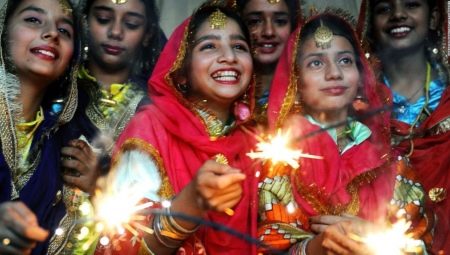
Not in all countries January 1 is considered to be the New Year. In India, the date changes annually depending on the Hindu calendar.
Peculiarities
The New Year in the most mysterious country in the world, although it is called that, is very different from the holiday that residents of other states are used to. It is no coincidence that India is considered the most New Year country in the world. New Year in India is celebrated in each state on different days.
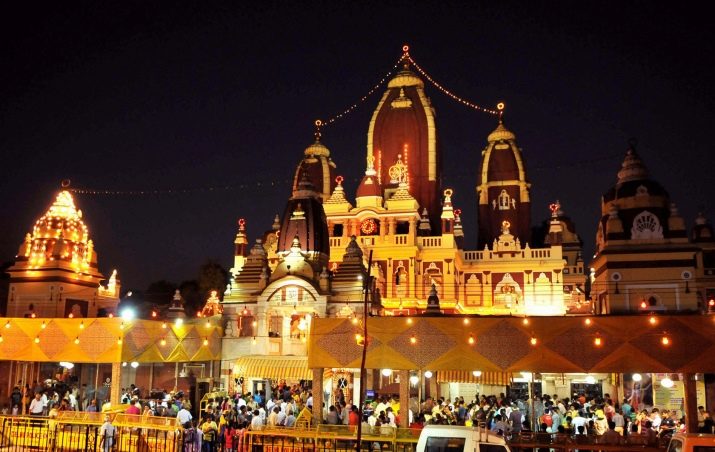
Usually the traditional celebration in many regions begins on the first day of the month of Chaitra, that is, in the third decade of March. But the inhabitants of Kashmir celebrate the New Year on March 10, the inhabitants of Andhra Pradesh - at the end of March, the Sikhs of Punjab - on April 14, West Bengal and Assam officially celebrate it on April 15, in Kerala the celebration falls on August and September, in some regions - at the end of October and early November.
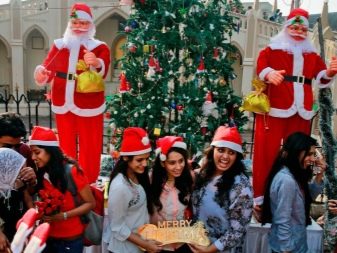
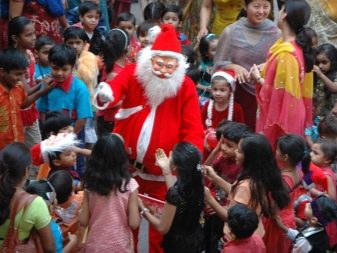
Indian youth living in large cities and guests of the country celebrate the New Year on the night of December 31 to January 1. This tradition originated in the twentieth century and does not yet have established rituals. It contains details of Western European culture and elements of national flavor. On the eve of the holiday, someone arranges a general cleaning of the house, gets rid of trash, burns old things. Others paint their skin with henna ornaments to attract good luck and happiness in the coming year.
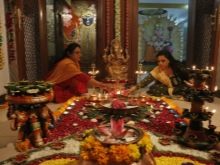
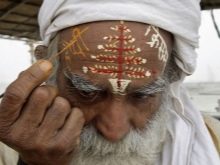
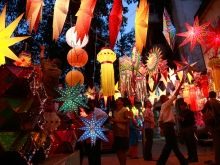
India is distinguished by its distinctive culture and a large number of religious directions. On holidays, it looks amazing: the roofs of the houses attract the attention of people with orange flags and lights. Some Hindus decorate their homes with garlands.Many inhabitants of different continents associate exotic India with amazing aromas and bright colors. And in fact, Indian villages are filled with a wonderful fragrance on holidays. North Indians dress up and adorn themselves with fresh flowers. They prefer whites, reds, pinks and purples.
Exotic fruits are an obligatory attribute of the southern part of the country.
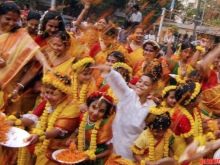
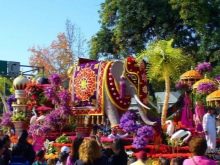
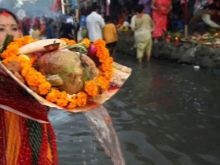
Hindus believe that as you spend the holiday, the whole year will pass... The celebration is quite colorful. Noisy fairs, carnival processions and theatrical performances are held in the squares and streets. Bells ring out at midnight, and colorful fireworks flare up everywhere. In port cities at 12 o'clock at night, ship sirens are turned on, notifying residents of the New Year.
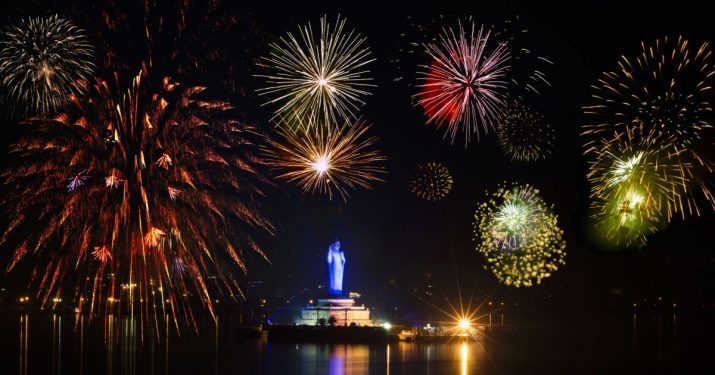
Time spending
Several main types of the New Year are celebrated in the country. The Indian lunar calendar plays an important role in finding out the date. Some states celebrate it more than once throughout the year.
- In mid-January, nature awakens after the end of winter, and the inhabitants of the northern regions of India celebrate Lori Day. The date coincides with the Russian Old New Year. On this day, it is customary to present gifts to each other.
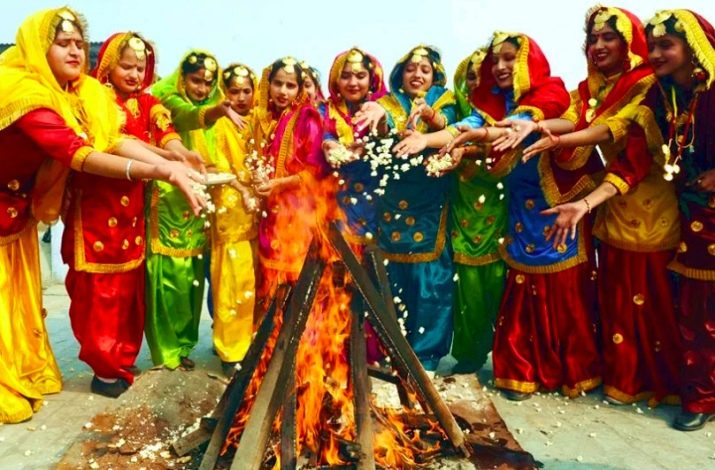
- State of Kashmir celebrates New Year from March 10... The festivities have been going on for over a month.
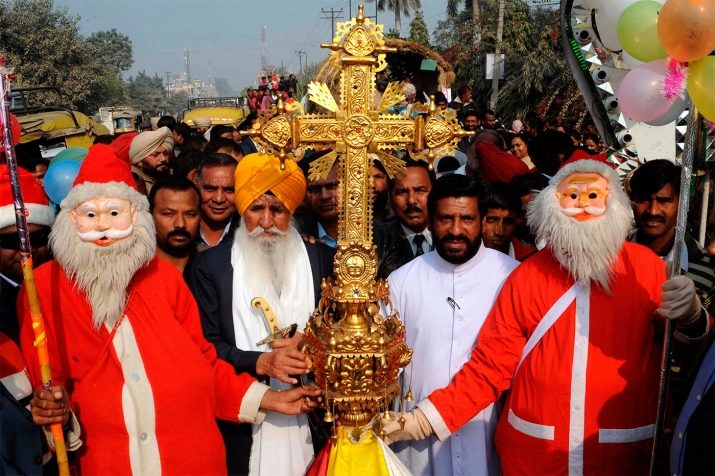
- The Marathas and Konkani celebrate the New Year at the end of March and the first days of April. The celebration begins on the first day of the waxing moon of the month of Chaitra according to the Hindu calendar. Usually the population of the Andhra Pradesh and Karnataka regions organizes a grand festival. Villagers coat their walls with cow dung in anticipation of a happy year. In Indian cities, the cultural program of the celebration includes literary disputes, awards to writers and poets. Music and dance events take place in the evenings and on weekends.
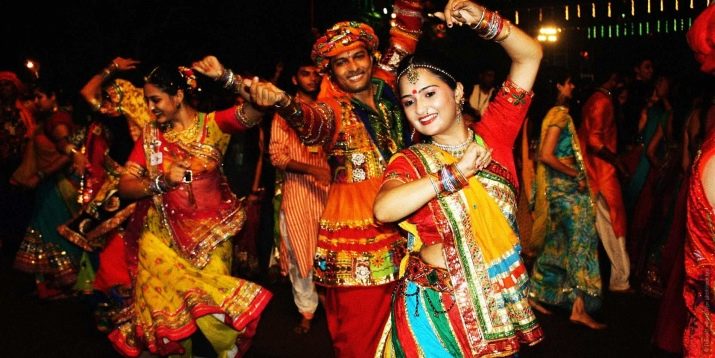
- Southerners celebrate Vishu, the day that follows the vernal equinox in the Indian calendar. The astrological transition from Pisces to the Aries phase corresponds to the first day of the New Year. It is celebrated in Tamil Nadu with distinctive traditional rituals. People dress up in skirts made from dried banana leaves. Masks hide their faces.
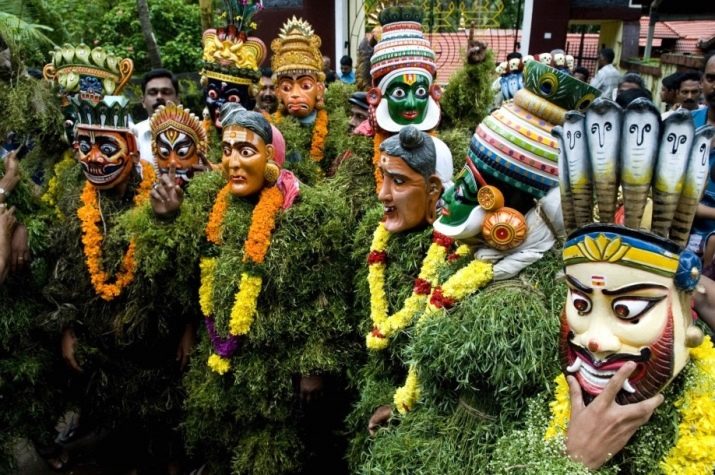
- The Sikhs celebrate the New Year on April 14 and dedicate it to the first day of the month of the solar calendar - Vaisakh Nanakshahi. Waisaki is the most beloved Sikh holiday. On this day, at a festive ceremony, postulates from the holy book of Sikhs are solemnly read. Residents of Indian states such as Assam, Manipur, West Bengal, Orissa are also guided by the Hindu solar calendar and officially celebrate the holiday on April 15th. In some regions of North India, a solemn event is held these days associated with the ritual of ablution in the sacred river. New Year's holidays coincide with the harvest. The harvest festival takes place in Uttarakhand, Himachal Pradesh and Haryana.
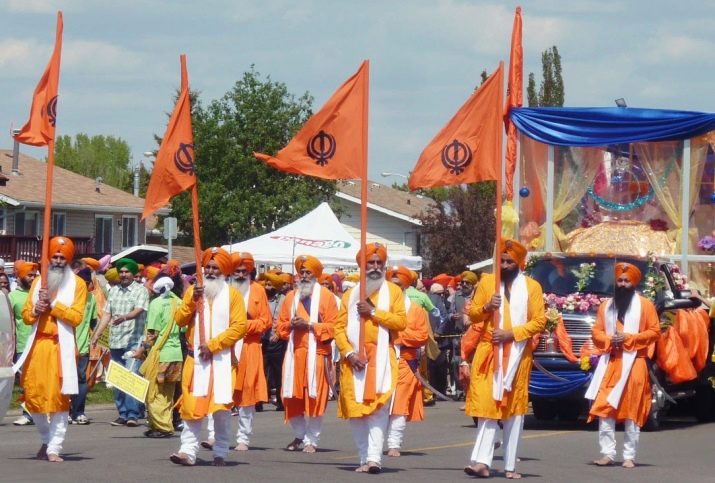
- In Kerala, New Year coincides with the first day of the month of Chingam. (from August 16 to September 15).
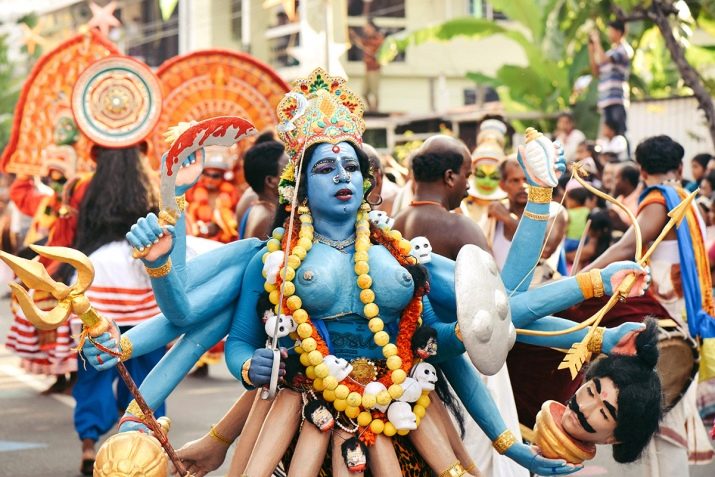
- The original traditions are inherent in the Diwali holiday, which occurs simultaneously with the "Festival of Lights". Diwali symbolizes the triumph of good over evil. It is celebrated from late October to early December. Throughout the entire time, it is customary to give each other gifts and light lamps. Even the Ganges River glows all from the lights floating in it.
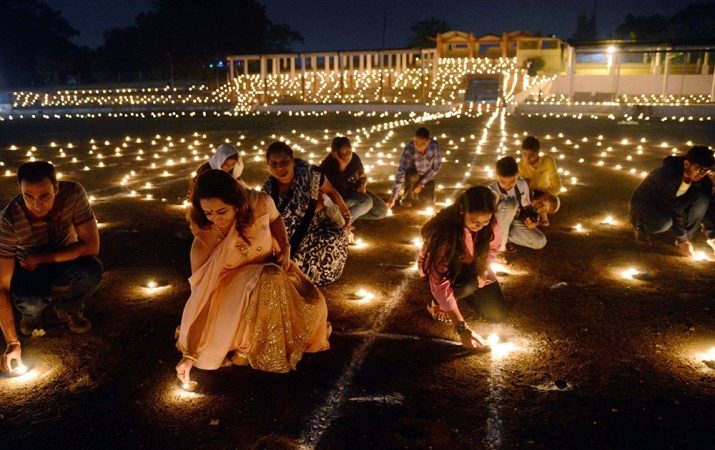
Customs and rituals
Indians celebrate New Years noisy and fun... Mass festivities take place everywhere, songs are heard everywhere. People dance and have fun until the morning. Indians are often located on the banks of the river. There they lay out treats right on the sand and share the food with others. A huge amount of spices and spices on the New Year's table symbolizes abundance and wealth. Traditionally, Hindus avoid eating fish and meat dishes on this day, so as not to anger their gods.It is customary to cook rice with vegetables, bread cakes, cheese pies, pickled fruits and vegetables in mustard oil.
Sweet dishes are put on the table: semolina pudding, milk fudge, cottage cheese in sweet syrup, rice sweets with nuts and cardamom.
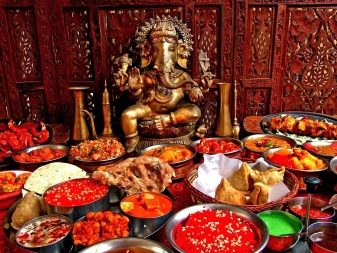
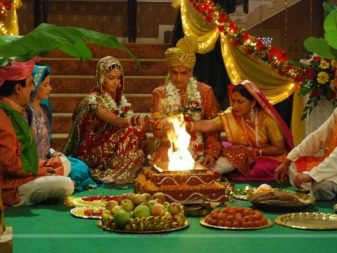
During the celebration of Vishu, treats consist of equal amounts of bitter, sweet, sour and salty foods. On the eve of the celebration, preparing a special offering with cucumbers, rice and nuts. The oldest women offer them to the Hindu deities. Along with the food, special mirrors, yellow flowers, sacred texts and coins are placed on the tray. A bronze lamp is installed not far from the offering.

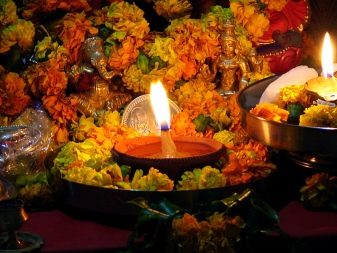
After waking up in the early morning, all family members with closed eyes make their way to the altar room. They believe that what they see first will accompany them throughout the year.... And the lines read at random from an open page from the ancient Indian epic "Ramayana" will predict for them the events of the upcoming future.
In the central part of the country, during mass festivities, it is customary to fly kites, publicly burn stuffed animals or an elegantly decorated tree. Locals organize archery competitions, jump over fires, walk on hot coals and stones. The participants of the celebration sprinkle themselves with multi-colored powders and paint them.
The inhabitants of Bengal are sure to wash away the sins that have accumulated over the year in the river.
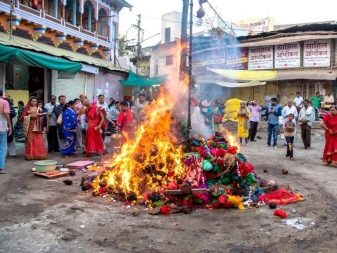
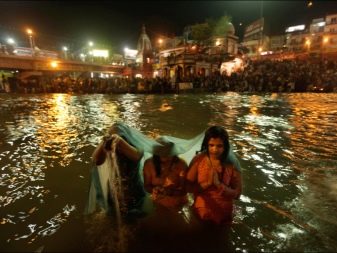
On holidays, it is strictly forbidden to be irritated, rude and rude. Many Indian provinces start the year by honoring sacred cows. A special treat is prepared especially for them.
The ritual is giving gifts to poor relatives. New Year's gifts most often consist of baskets with fruits, nuts and fresh flowers. Children are presented with trays with sweets and beautiful fruit, decorated with wonderful flower arrangements.
Superbly decorated trays delight the little ones and will be remembered for a long time.
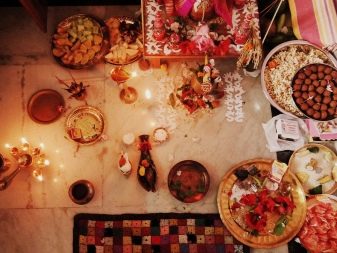
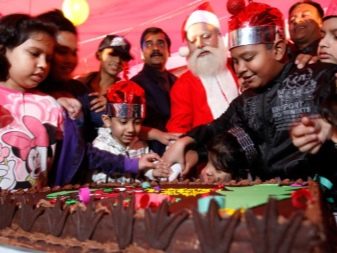
The following video shows how New Year is celebrated in India.








